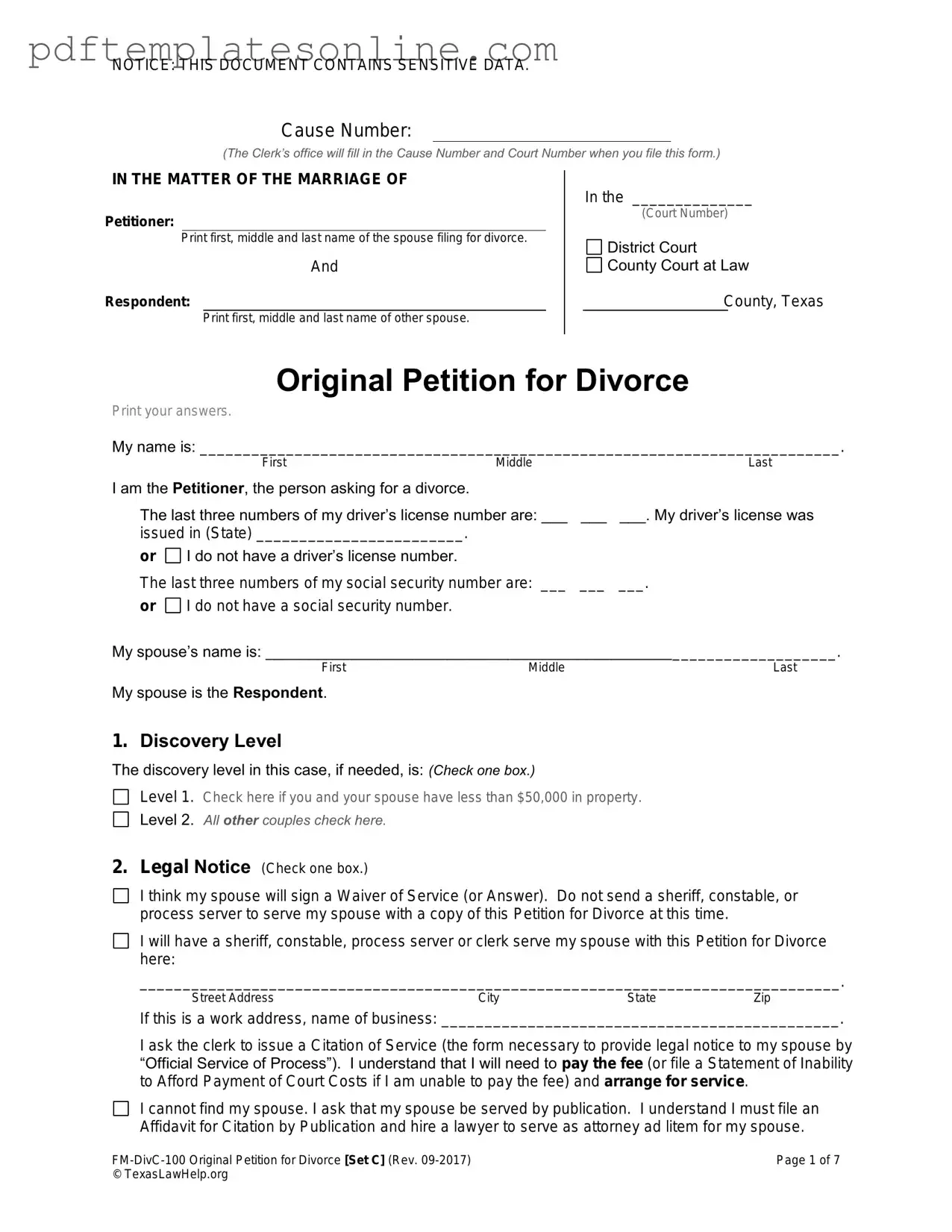Filling out the Texas Law Help FM-DivC-100 Original Petition for Divorce Set C form can be a daunting task. Many individuals make common mistakes that can delay the process or even lead to complications down the line. Here are nine frequent errors to watch out for when completing this important document.
One of the most common mistakes is not providing accurate personal information. It's essential to ensure that names, addresses, and other identifying details are correct. An error in this section can cause confusion and may lead to delays in the court's processing of your petition.
Another frequent issue is neglecting to check the residency requirements. Texas law requires that at least one spouse has lived in the state for six months before filing. If this condition is not met, the petition may be dismissed.
Many people also forget to specify the grounds for divorce. In Texas, you must state whether you are seeking a divorce based on fault or no-fault grounds. Failing to clearly outline this can create complications during the proceedings.
Additionally, some individuals overlook the importance of including all relevant financial information. This includes assets, debts, and income. Omitting this information can lead to disputes later on, especially regarding property division and spousal support.
Another mistake is not signing the form correctly. It’s crucial to sign in the designated area and to date the document. An unsigned petition will be considered incomplete, which can stall your case.
Failing to provide copies of the petition is another common error. You need to submit the original petition to the court and provide copies for your spouse and any other parties involved. Not doing this can lead to delays in serving the documents.
Some individuals make the mistake of not following the proper filing procedures. It’s important to file your petition with the correct court and pay any required fees. Ignoring these steps can result in your case being thrown out.
Moreover, people often underestimate the importance of reviewing the entire form before submission. Mistakes can easily slip through the cracks, so taking the time to double-check for errors can save you a lot of trouble later.
Lastly, many forget to include a request for temporary orders if necessary. If you need immediate relief regarding child custody, support, or other matters, it’s important to make this request clear in your petition.
By being mindful of these common mistakes, individuals can help ensure a smoother process when filing for divorce in Texas. Taking the time to carefully complete the FM-DivC-100 form can make a significant difference in the outcome of your case.
